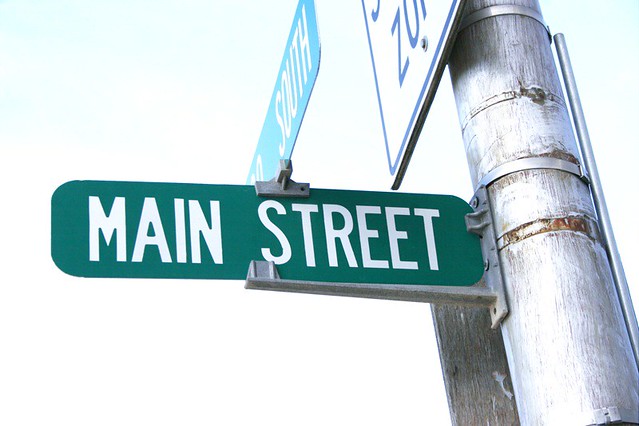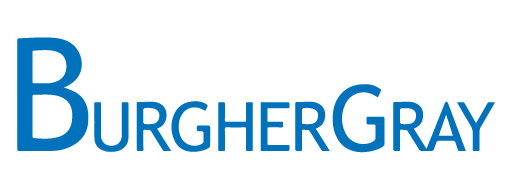COVID-19 Business Relief: Main Street Lending Program
May 11, 2020

On April 30, 2020, the Federal Reserve provided additional details on the Program that it first announced on April 9, 2020. The Program aims to bolster credit to small and mid-sized businesses. To do this, the Treasury Department will invest $75 billion in funding provided under the CARES Act into a special purpose vehicle (“SPV”) to be established and managed by the Federal Reserve Bank of Boston. The Federal Reserve will leverage the SPV equity capital to purchase up to $600 billion of participation interests in eligible loans. The Program as initially proposed was comprised of two facilities: the Main Street New Loan Facility (the “MSNLF”) and the Main Street Expanded Loan Facility (the “MSELF”) both of which were available to business with 10,000 or less employees or up to $2.5 billion in 2019 revenues. Based on newly revised term sheets published on April 30, 2020, the Federal Reserve added a third facility, the Main Street Priority Loan Facility (the “MSPLF”), and expanded Program eligibility to businesses with up to 15,000 employees or 2019 revenues of up to $5 billion. In addition, the newly revised Program terms reduced the minimum loan size to $500,000 from $1 million in the case of the MSNLF and the MSPLF and established a $10 million threshold for the MSPLF.
Eligible borrowers may elect to participate in not more than one of the three Program facilities through any eligible lender. Eligible lenders may make new loans to eligible borrowers under the MSNLF or the MSPLF or upsize existing loans to eligible borrowers under the MSELF. Each lender will be required to retain either 5% or 15% of each eligible loan made by it, depending on the facility, and the SPV will purchase the remaining 85% or 95%, as the case may be, in the form of a participation interest. Program loans will be full recourse and, unlike the Small Business Administration’s Paycheck Protection Program (the “PPP”), are not forgivable.
For purposes of the Program, an eligible lender means a United States federally insured depository institution (including a bank, savings association, or credit union), a United States branch or agency of a foreign bank, a United States bank holding company, a United States savings and loan holding company, a United States intermediate holding company of a foreign banking organization, or a United States subsidiary of any of the foregoing. An eligible lender must also make certain certifications and covenants, including that it will not cancel or reduce any existing lines of credit extended to the borrower except in the case of default and that the methodology used for calculating the requisite leverage requirements is the same as was used for similarly situated borrowers on or before April 24, 2020.
In general, all three of the facilities have similar borrower eligibility requirements, including mandatory covenants and certifications. The Program is designed to provide relief for businesses that were in good standing prior to the COVID-19 pandemic, therefore borrowers must meet applicable credit standards and eligible lenders are expected to conduct an assessment of each potential borrower’s financial condition at the time of application. One such standard is that the borrower must have had an internal lender rating equivalent to a “pass” in the Federal Financial Institutions Examination Council’s (the “FFIEC”) supervisory rating system on any outstanding loan with the eligible lender as of December 21, 2019. In addition, an eligible borrower must meet each of the following criteria:
- was established prior to March 13, 2020
- is not an ineligible business[2]
- meets at least one of the following two conditions: (i) has 15,000 employees or fewer, or (ii) had 2019 annual revenues of $5 billion or less
- was created or organized in the United States or under the laws of the United States with significant operations in and a majority of its employees based in the United States
- does not also participate in the any of the other Program facilities or the Primary Market Corporate Credit Facility;
- has not received specific support pursuant to the Coronavirus Economic Stabilization Act of 2020 (Subtitle A of Title IV of the CARES Act)[3]
- was able make all of the certifications and covenants required under the Program for the specific facility chosen.
The loan eligibility criteria for the MSNLF and MSPLF facilities are similar. For either facility, an eligible loan may be either secured or unsecured, provided that it originated after April 24, 2020 and has all of the following features:
- four-year maturity
- principal and interest payments deferred for one year (unpaid interest will be capitalized)
- adjustable interest rate of LIBOR (1 or 3 month) + 300 basis points
- for the MSNLF, principal amortization of one-third at the end of the second year, one-third at the end of the third year, and one-third at maturity at the end of the fourth year
- for the MSPLF, principal amortization of 15% at the end of the second year, 15% at the end of the third year, and a balloon payment of 70% at maturity at the end of the fourth year
- minimum loan size of $500,000
- maximum loan size that is the lesser of (i) $25 million or (ii) an amount that, when added to the eligible borrower’s existing outstanding and undrawn available debt, does not exceed four times (in the case of the MSNLF) or six times, (in the case of the MSPLF) the eligible borrower’s adjusted 2019 earnings before interest, taxes, depreciation, and amortization (“EBITDA”)
- is not, at the time of origination or at any time during the term of the eligible loan, contractually subordinated in priority to any of the eligible borrower’s other loans or debt instruments
- prepayment is permitted without penalty.
To be eligible for the MSELF facility, the existing loan (i.e., prior to upsize) must have been originated on or before April 24, 2020 and have a maturity of at least 18 months—although the lender may extend the maturity of the underlying loan at the time of the upsizing in order to meet the eligibility requirement.
To be eligible for the MSELF facility, the upsized portion of the loan must meet the following criteria:
- was originated on or after April 24, 2020
- have a minimum loan size of $10 million (increased from $1 million)
- have a maximum loan amount that does not exceed the least of:
- $200 million
- “35% of the eligible borrower’s existing outstanding and undrawn available debt that is pari passu in priority with the eligible loan and equivalent in secured status (i.e., secured or unsecured)” and
- an amount that, when added to the borrower’s existing outstanding and undrawn available debt, does not exceed six times the borrower’s adjusted 2019 EBITDA
- principal amortization of 15% at the end of the second year, 15% at the end of the third year, with a balloon payment of 70% at maturity at the end of the fourth year
- at the time of the upsizing, and for so long as the upsized tranche is outstanding, it must be senior to or pari passu with the borrower’s other debt, other than mortgage debt.
- The maturity, interest rate, and principal and interest deferment terms are the same as required for the MSNLF and MSPLF loans.
Each eligible borrower must also make specified certifications and covenants, including (without limitation) that the eligible borrower will only make mandatory principal and interest payments on any other debt until the eligible loan or upsized tranche is repaid in full. An eligible borrower must also certify that it reasonably believes that it can meet its financial obligations for at least 90 days following origination and does not expect to file for bankruptcy during that time period. In addition, the compensation, stock repurchase, and capital distribution restrictions under section 4003(c)(3)(A)(ii) of the CARES Act[4] apply, however S corporations and other pass-through entities may make distributions reasonably required to cover tax obligations in respect of the entity’s earnings. Borrowers will be expected to make commercially reasonable efforts to maintain payroll and retain employees while the eligible loan is outstanding.
The SPV will purchase at par value a 95% participation interest in each eligible MSNLF and MSELF loan[5], with the SPV and the eligible lender sharing the risk on a pari passu basis. An eligible lender with respect to a MSNLF loan must retain the other 5% of the loan until it matures or the SPV sells its participation interest, whichever comes first. An eligible lender under the MSELF facility must be one of the lenders that holds an interest in the existing underlying loan on the date of the upsizing and must retain its 5% portion of the upsized tranche of the eligible loan as well as its interest in the underlying loan until the earliest of the following occurs: The underlying eligible loan matures, the upsized tranche of the eligible loan matures, and the SPV sells its 95% participation. To the extent that the underlying loan is secured, the upsized portion of the loan must also be collateralized on a pro rata basis. For MSPLF loans, the SPV will purchase at par value an 85% participation interest in the eligible loans. However, the lender must retain the remaining 15% of the eligible loan, where the larger amount is intended to account for the increased risk of a higher debt to income ration, until the loan matures or the SPV sells 100% of its participation interest therein. Similarly, the SPV and the lender will share risk in the eligible loan on a pari passu basis.
The SPV will cease purchasing participations in eligible loans under the Program on September 30, 2020, unless the Federal Reserve and the Department of the Treasury extend the facility. The Federal Reserve will continue to fund the SPV after such date until the SPV’s underlying assets mature or are sold.
As noted above, the Program is one of several liquidity facilities being implemented by the Federal Reserve in collaboration with the Treasury Department and it has not yet started. It is expected to be available by the end of May 2020. The foregoing is based on the current guidance available, which is subject to change without prior notice.
BurgherGray will continue to monitor developments with respect to the Program, including the start date and any changes in the eligibility criteria or other terms. Should you have any questions, please feel free to reach out to Gopal M. Burgher ([email protected]) or Lisa Brice ([email protected] or your regular BurgherGray contact.
[1] Other facilities include: the Primary Market Corporate Credit Facility, which is intended to provide loans and bond financing to U.S. companies with investment grade debt ratings; the Secondary Market Corporate Credit Facility, through which the Feds will effect secondary market purchases of bonds or ETFs issued by U.S. companies; the Term Asset-Backed Securities Loan Facility (TALF) through which the Feds will fund loans secured by asset-backed securities with underlying credit exposure to consumer and small business loans, including student loans, auto and credit card loans, equipment loans, loans guaranteed by the Small Business Administration, and certain other assets; the Money Market Mutual Fund Liquidity Facility, which will fund loans to eligible financial institutions secured by high-quality assets purchased by the financial institution from money market mutual funds in order to assist money market funds in meeting demands for redemptions by households and other investors; the Commercial Paper Funding Facility, which will provide liquidity to the commercial paper market through the purpose of unsecured and asset-backed commercial paper rated A1/P1 directly from eligible companies; and the Municipal Liquidity Facility, which will fund purchases of tax, revenue, and bond “anticipation” securities from the states and certain of their political subdivisions that meet specified population thresholds.
[2] An ineligible business is a type of business listed 13 CFR 120.110(b)-(j) and (m)-(s), as modified by the Small Business Administration’s PPP regulations and includes the following: non-profits; those primarily engaged in the lending; passive businesses owned by developers and landlords that do not actively use or occupy the assets acquired or improved with the loan proceeds (with limited exception); life insurance companies; businesses located outside of the U.S.; businesses deriving more than one-third of gross annual revenue from legal gambling activities; businesses with an officer, director or owner of more than 20% who is incarcerated, on probation, on parole, or has been indicted for a felony or a crime of moral turpitude; unless waived, businesses that have previously defaulted on a Federal loan or Federally assisted financing; and businesses primarily engaged in political or lobbying activities, among other things.
[3] Businesses that have received PPP loans are permitted, provided they are also eligible borrowers.
[4] Until 12 months after the loan is no longer outstanding, the eligible borrower is not allowed to: (1) repurchase an equity security that is listed on a national securities exchange of the eligible borrower or any parent company of the eligible borrower, except to the extent required under a contractual obligation that was in effect as of March 27, 2020; (2) pay dividends or make other capital distributions with respect to the common stock of the eligible borrower; (3) for any officer or employee of the eligible borrower whose total compensation exceeded $425,000 in calendar year 2019, pay (i) total compensation that exceeds that paid in calendar year 2019 or (ii) severance pay or other benefits upon termination of employment with the eligible borrower which exceeds twice the maximum total compensation in calendar year 2019; or (4) for any officer or employee of the eligible borrower whose total compensation exceeded $3,000,000 in calendar year 2019, award total compensation in excess of the sum of (i) $3,000,000; and (ii) 50 percent of the excess over $3,000,000 of the total compensation received by the officer or employee from the eligible borrower in calendar year 2019. The term ‘‘total compensation’’ includes salary, bonuses, awards of stock, and other financial benefits provided by an eligible business to an officer or employee of the eligible business.
[5] In the case of the MSELF, the participation interest purchased will only be with respect to the upsized portion of the loan (not the pre-existing loan portion).
ATTORNEY ADVERTISING. The information contained herein may constitute attorney advertising in certain jurisdictions and, in any event, should not be construed as legal advice with respect to any specific fact or circumstance. The information was prepared and is provided by BurgherGray LLP for general information purposes only and should not be used or relied on as a substitute for competent legal advice from an appropriately licensed attorney at law. Neither the provision by BurgherGray or the use by you of the information presented herein creates any attorney-client relationship between you and BurgherGray LLP. Any prior result included in the information does not guarantee or imply a similar result or outcome in other matters.

1350 Broadway | Suite 1510
New York, NY 10018
T: 646.513.3231 | F: 646.561.9866
This website contains attorney advertising. Prior results do not guarantee a similar outcome | Copyright © 2020. All rights reserved. Terms & Conditions and Privacy Policy



